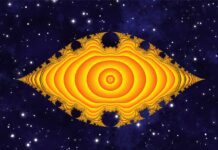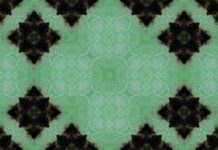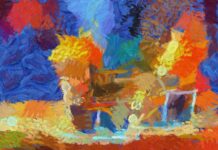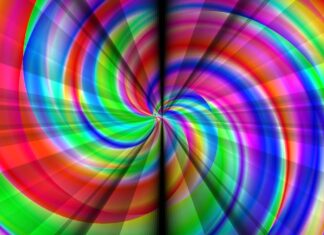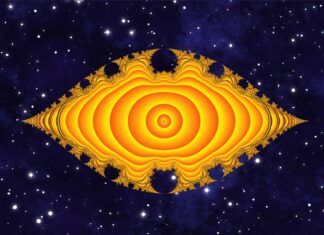Deconstruct, a concept that has permeated fields as diverse as art, philosophy, and science, beckons us to embark on a journey into its multifaceted essence. It is a concept that defies easy categorization, challenging our perceptions and inviting us to explore the layers of meaning that lie beneath its surface. In this exploration, we delve into the profound impact of deconstruction, tracing its origins, evolution, and its enduring relevance in shaping our understanding of the world.
At its core, Deconstruct represents a method of inquiry and analysis that seeks to unravel the hidden assumptions and structures within a given concept or text. It is a mode of thinking that emerged in the latter half of the 20th century, particularly associated with the work of the French philosopher Jacques Derrida. Deconstruction, in its essence, is an act of dismantling, a process of revealing the complexities and contradictions that often lie beneath the surface of seemingly straightforward ideas.
Deconstruction challenges the notion of fixed meanings and binary oppositions. It posits that language, thought, and culture are inherently unstable, characterized by fluidity and ambiguity. The act of deconstructing involves examining how meaning is constructed and questioning the hierarchies and dualities that underlie our understanding of the world.
In literature, Deconstruct has left an indelible mark on literary theory and criticism. It encourages readers to engage with texts in a way that goes beyond the surface narrative. Instead of seeking a definitive interpretation, deconstructive reading explores the multiple and often conflicting meanings that a text can evoke. It is a practice that embraces the idea that a text’s meaning is never fixed but is shaped by the interplay of language, context, and reader interpretation.
One of the seminal works that exemplifies deconstructive thinking is Jacques Derrida’s “Of Grammatology.” In this groundbreaking text, Derrida challenges the traditional notions of language and writing, arguing that speech has historically been privileged over writing in Western thought. He deconstructs this hierarchy, revealing how writing is not a mere derivative of speech but a complex and powerful mode of communication in its own right.
In the realm of art and architecture, Deconstruct has inspired movements and works that defy conventional notions of form and structure. Deconstructivism, as an architectural style, seeks to disrupt the traditional balance and harmony in design. Architects like Frank Gehry and Zaha Hadid have embraced deconstructive principles, creating buildings that appear fragmented and chaotic, challenging our perception of space and structure.
Deconstruction also extends its reach into the realm of identity and cultural studies. It questions the fixed categories and binary oppositions that underlie notions of gender, race, and ethnicity. Scholars and activists have used deconstructive thinking to challenge the essentialist views that often underpin discussions of identity, emphasizing the fluid and evolving nature of individual and collective identities.
Furthermore, Deconstruct has implications in the fields of science and technology. It encourages us to critically examine the assumptions and biases that may be embedded in scientific theories and technological innovations. The act of deconstructing scientific paradigms can lead to new perspectives and insights, opening up possibilities for innovation and progress.
Deconstruct, as a concept, is not limited to academic and intellectual pursuits. It has broader implications for our understanding of the world and our place within it. It invites us to question the structures and systems that shape our lives, to challenge the status quo, and to embrace the inherent complexity and uncertainty of existence.
In conclusion, Deconstruct is a concept that transcends disciplinary boundaries, offering a lens through which we can interrogate the foundations of our knowledge and beliefs. It challenges us to go beyond surface appearances and to engage with the profound complexities of language, culture, and identity. As we navigate an ever-changing world, deconstruction remains a valuable tool for critical thinking and a reminder of the limitless potential for exploration and discovery.
Critical Inquiry:
Deconstruction involves a rigorous and critical examination of texts, concepts, or structures to uncover hidden meanings and assumptions.
Challenges Binary Oppositions:
It challenges traditional binary oppositions and hierarchies, highlighting the fluidity and complexity of language and thought.
Multiplicity of Meanings:
Deconstruction embraces the idea that a text or concept can have multiple, often contradictory, meanings depending on context and interpretation.
Interdisciplinary Impact:
Deconstruction transcends disciplinary boundaries, influencing fields such as literature, philosophy, art, architecture, identity studies, and even science and technology.
Embracing Complexity:
It encourages a nuanced and open-ended approach to understanding the world, emphasizing the inherent complexity and ambiguity of human experiences and cultural constructs.
Deconstruction, a concept that has permeated numerous facets of human thought and culture, invites us to explore its rich tapestry of implications and influences. This journey delves beyond the boundaries of key features and technicalities, immersing us in the profound impact it has had on our understanding of language, art, identity, and the very essence of existence itself.
At its core, Deconstruction is a mode of thinking that defies traditional notions of definitiveness and fixed meanings. It is a lens through which we examine the intricate relationship between language, thought, and the world around us. In this exploration, we come to recognize that Deconstruction is not merely a philosophical concept but a dynamic force that has shaped our intellectual landscape.
Deconstruction’s origins can be traced to the works of the French philosopher Jacques Derrida, who, in the mid-20th century, sought to challenge the prevailing assumptions about language and meaning. His groundbreaking contributions to the field of deconstruction have had far-reaching consequences, inviting us to rethink the foundations of our knowledge.
One of the fundamental insights of Deconstruction is the instability of language itself. It contends that language is not a transparent medium through which we convey meaning but a complex system of signs and symbols that constantly defer meaning. This deferral of meaning arises from the inherent ambiguity of words and the play of language in context.
Consider, for example, the word “tree.” In everyday language, we may think of a tree as a straightforward concept, a fixed reference to an object in the world. However, Deconstruction asks us to probe deeper. What do we mean by “tree”? Is it the physical, tangible entity we encounter in the natural world, or is it an abstraction, a mental representation of that entity? The word “tree” becomes a site of complexity, revealing the gap between language and reality.
This gap, known as the “differance” in Deconstructive terminology, underscores the perpetual deferral of meaning in language. Words are not stable signifiers but are contingent upon context and interpretation. The meaning of “tree” may differ depending on whether it is used in a scientific, poetic, or everyday context. Deconstruction revels in this multiplicity of meanings, acknowledging that language is a dynamic and ever-shifting terrain.
Deconstruction’s influence extends far beyond the realms of philosophy and linguistics. It has left an indelible mark on literary theory and criticism, reshaping the way we approach texts and narratives. Deconstructive reading seeks to unearth the hidden layers of meaning within a text, exposing the tensions, contradictions, and complexities that often lie beneath the surface.
In literature, Deconstruction invites us to embrace the idea that there is no single, definitive interpretation of a text. Instead, a text can yield multiple, even contradictory, interpretations, depending on the reader’s perspective and the context of reading. This recognition challenges the notion of an authoritative reading and celebrates the diversity of meanings that emerge through engagement with a text.
Moreover, Deconstruction’s impact reverberates in the world of art and architecture. Deconstructivism, as an architectural style, seeks to disrupt conventional notions of form and structure. Architects like Frank Gehry and Zaha Hadid have embraced deconstructive principles, creating buildings that appear fragmented and chaotic, challenging our perceptions of space and design.
In art, Deconstruction invites us to reconsider traditional artistic boundaries. Artists explore the interplay between creation and deconstruction, often blurring the lines between the two. Works of art may be constructed and deconstructed in an ongoing cycle, reflecting the dynamic nature of artistic expression.
Beyond its influence in the arts and humanities, Deconstruction has profound implications in the realm of identity and cultural studies. It questions the fixed categories and binary oppositions that underlie notions of gender, race, and ethnicity. Deconstructive thinking invites us to challenge essentialist views, emphasizing the fluid and evolving nature of individual and collective identities.
In the context of identity studies, Deconstruction invites us to recognize that identity is not a static concept but a dynamic and complex interplay of factors. For example, the notion of gender is not confined to a simple binary of male and female but encompasses a spectrum of identities and expressions. Deconstruction encourages us to embrace this complexity and engage with the lived experiences of individuals whose identities defy traditional categories.
Furthermore, Deconstruction finds relevance in the fields of science and technology. It encourages us to critically examine the assumptions and biases that may be embedded in scientific theories and technological innovations. The act of deconstructing scientific paradigms can lead to new perspectives and insights, opening up possibilities for innovation and progress.
In the realm of science, Deconstruction invites us to question the objectivity of scientific discourse. It recognizes that scientific knowledge is shaped by cultural, historical, and social factors, and it encourages us to scrutinize the power dynamics that influence scientific narratives.
Additionally, Deconstruction challenges the notion of a unified and fixed self. It invites us to deconstruct our own identities and beliefs, recognizing that our sense of self is constructed and reconstructed through ongoing processes of reflection and interaction.
In conclusion, Deconstruction is not merely a philosophical concept but a dynamic force that has left an indelible mark on our understanding of language, art, identity, and the world itself. It invites us to embrace complexity, ambiguity, and multiplicity in our engagements with the world. As we navigate the intricacies of human existence, Deconstruction remains a valuable tool for critical thinking and a reminder of the boundless potential for exploration and discovery.






